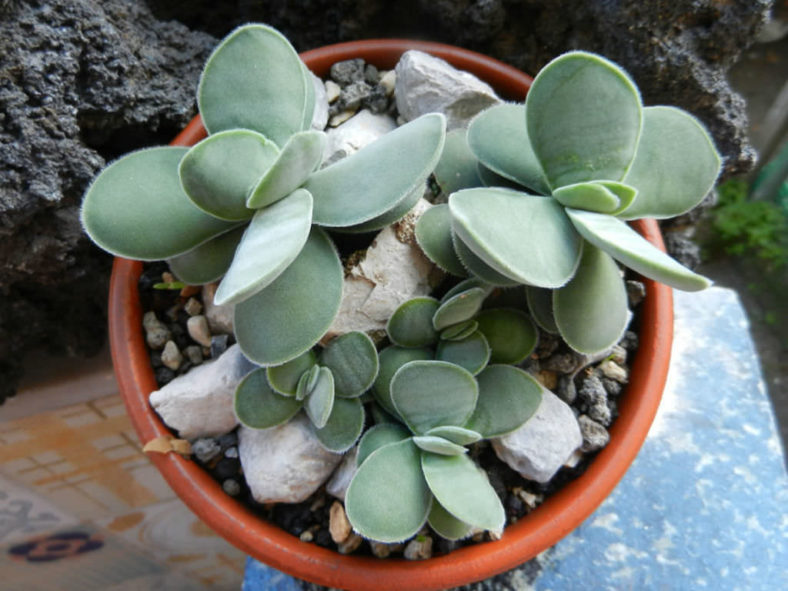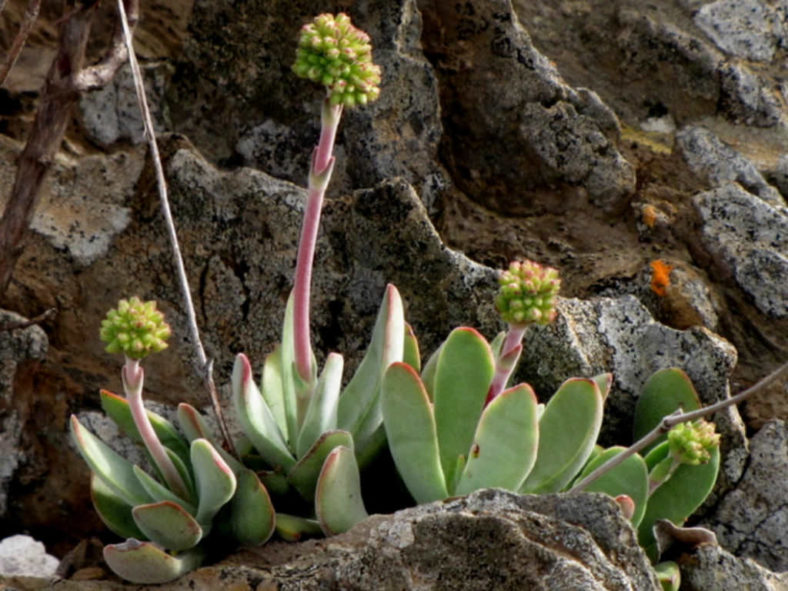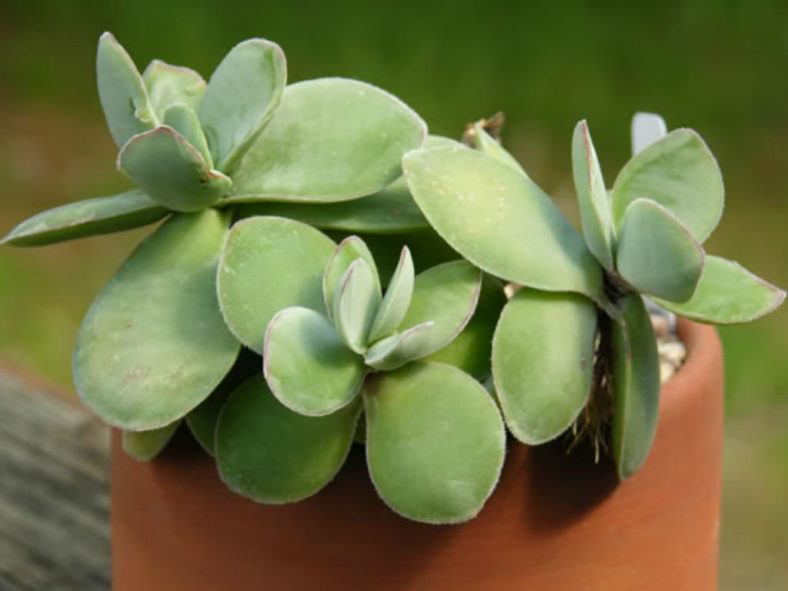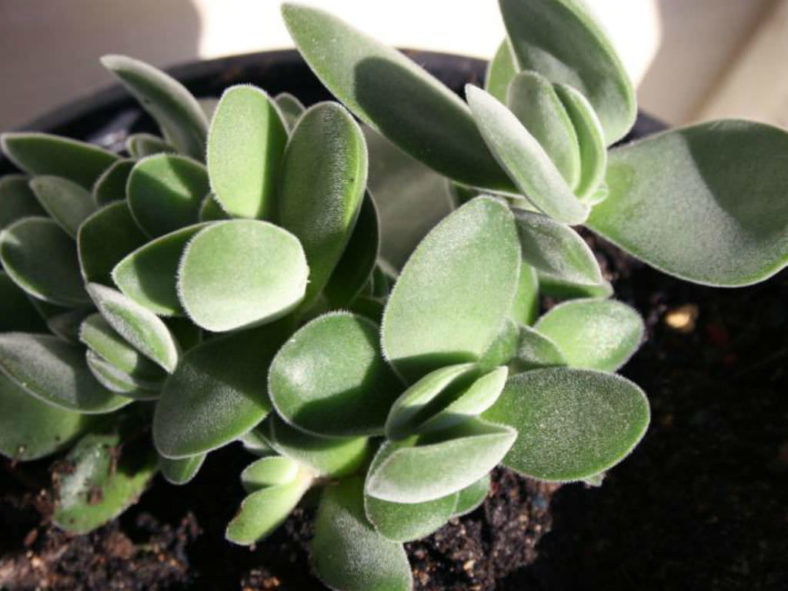Scientific Name
Crassula cotyledonis Thunb.
Synonym(s)
Crassula cotyledon, Globulea cotyledonis, Purgosea cotyledonis
Scientific Classification
Family: Crassulaceae
Subfamily: Crassuloideae
Genus: Crassula
Etymology
The specific epithet "cotyledonis" (pronounced "ko-ty-LEE-don-is") means "resembling Cotyledon" and refers to the appearance of this species, which resembles a member of the genus Cotyledon.
Origin
The native range of Crassula cotyledonis extends from southern Namibia to the Little Karoo in the Western Cape and Eastern Cape provinces of South Africa. It grows on gravelly slopes among rocks and bushes.
Description
Crassula cotyledonis is a small succulent with basal rosettes and few short, rarely woody branches. It can grow up to 8 inches (20 cm) tall. The leaves are grey-green to yellowish-green, densely covered with coarse, recurved hairs and marginal cilia. They are oblanceolate to broadly obovate, measuring up to 3.6 inches (9 cm) in length and 1.4 inches (3.5 cm) in width, usually smaller. The old leaves remain on the branches.
The flowers are tubular to almost cylindrical, ranging in color from cream to yellow. They appear in dense, spherical heads on pubescent stalks that can grow up to 12 inches (30 cm) long in late spring and summer.

How to Grow and Care for Crassula cotyledonis
Hardiness: USDA hardiness zones 9b to 11b: from 25°F (-3.9°C) to 50°F (10°C).
Crassulas are easy to grow but susceptible to mealybugs and fungal diseases. Overwatering is sure to be fatal, as with all succulents, so err on the side of being too dry rather than too wet. Never let your plant sit in water. If you water from beneath by allowing the plant to sit in a saucer, pour off any excess water after a few minutes.
These succulents are generally started by division, offsets, or leaf cuttings. Crassulas can be easily propagated from a single leaf. Sprout leaves by placing them into a potting mix for succulents, then covering the dish until they sprout.
Repot as needed, preferably during the warm season. To repot your Crassula, ensure the soil is dry before repotting, then gently remove the pot. Knock away the old soil from the roots, removing any rotted or dead roots. Treat any cuts with a fungicide. Place the plant in its new pot and backfill it with potting soil, spreading the roots as you repot. Leave the plant dry for a week or so, then begin to water lightly to reduce the risk of root rot.
Learn more at How to Grow and Care for Crassula.
Links
- Back to genus Crassula
- Succupedia: Browse succulents by Scientific Name, Common Name, Genus, Family, USDA Hardiness Zone, Origin, or cacti by Genus
Photo Gallery
Click on a photo to see a larger version.


